Japan Atomic Industrial Corporation provides updates on the Fukushima reactor status and major events.
Thanks again New Energy Times readers for the tip!
Japanese Ministry of Education, Culture, Sports, Science and Technology (MEXT)
[DRAFT REPORT]
New Energy Times again thanks the nuclear scientists who have provided us this link:
The Japanese National Institute of Advanced Industrial Science and Technology, located in Tsukuba and Tokyo has started to monitor radiation in the air.
They detected a small amount of contamination using a 1.5 m2 sampling surface. For iodine-131 the contamination is less than 100 Bq/m2.
I will try to add more analysis to this within a day, if not a few hours.
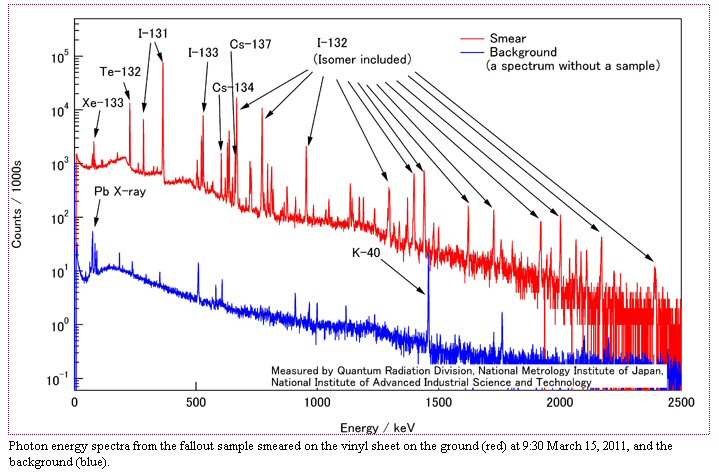
The following data show the change of the radioactivity of these radionuclides.
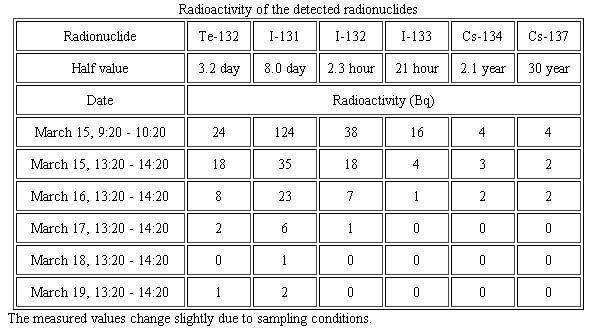
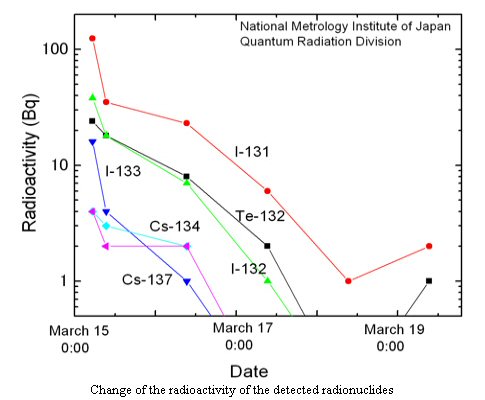
New Energy Times thanks the nuclear scientists who have provided us links to this essential information.
The facts that the New York Times couldn’t (or wouldn’t) report: Real-time environmental radioactivity and radiation information from the Japanese Nuclear Safety Division, Ministry of Education, Culture, Sports, Science and Technology – Disaster Prevention Network for Nuclear Environments.
Click here for live realtime link.
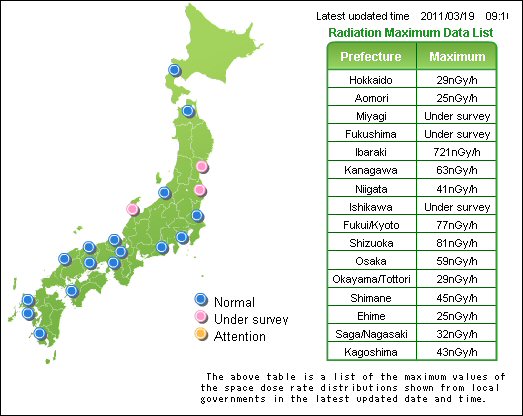
Snapshot as of 18 March, 2011, 1710 PT

(Updated) Snapshot as of 19 March, 2011, 0900 PT
University of California, Berkeley Air Sampling Station
Updated, March 19, 2011:
On March 18, the same day that the New York Times published some ominous headlines, Reuters published two stories indicating that Japan’s nuclear threat is less worrisome than was portrayed by the New York Times.
New Energy Times did not agree with the basis for the New York Times’ dramatic headlines because there was no evidence of a “plume,” nor was there any published account of quantitative or qualitative data on airborne radioactive materials in transit to the West coast.
Original Post, March 18, 2011:
March 18, 2011 – New York Times: Japan Raises Nuclear Crisis Warning Level Retroactively
March 18, 2011 – Reuters: Few Radioactive Particles On U.S. West Coast: Sources
March 18, 2011 – Reuters: Special Report: Radiation fears may be greatly exaggerated
March 17, 2001 – New Energy Times: Japan Reactors: What Plume?
March 17, 2011 – New Energy Times: Plume: What, How Much, Where and When?
March 17, 2011 – New Energy Times: Radioactive Particulate?
March 16, 2011 – New York Times: U.S. Calls Radiation ‘Extremely High;’ Sees Japan Nuclear Crisis Worsening
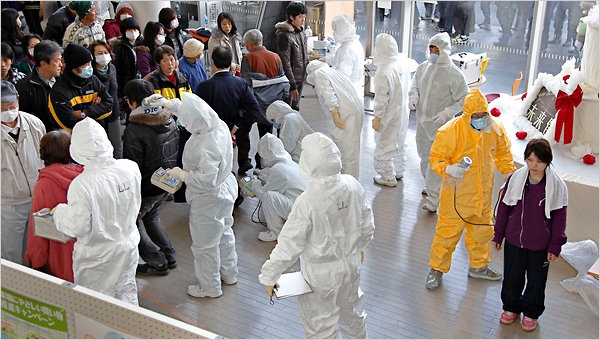
Image from New York Times story: “Evacuees receiving radiation scans in Nihonmatsu, Japan. Americans were advised by their embassy to evacuate a radius of 50 miles from the Fukushima plant.” Go Takayama/Agence France-Presse — Getty Images

